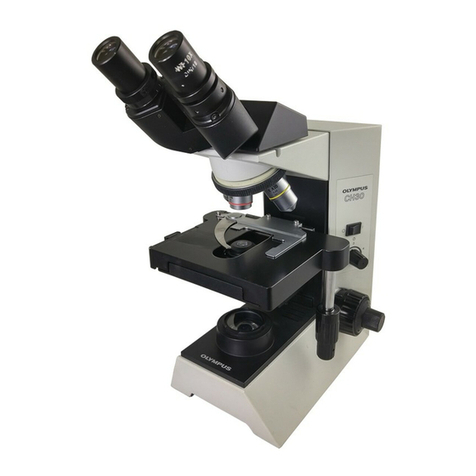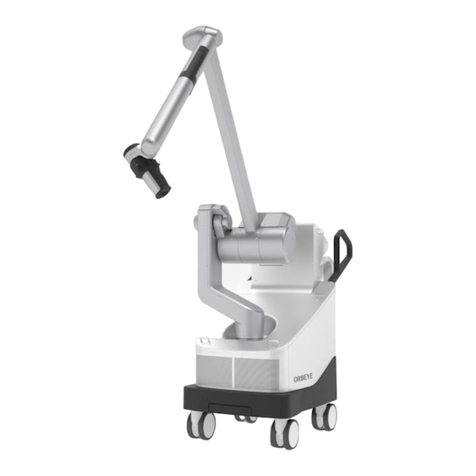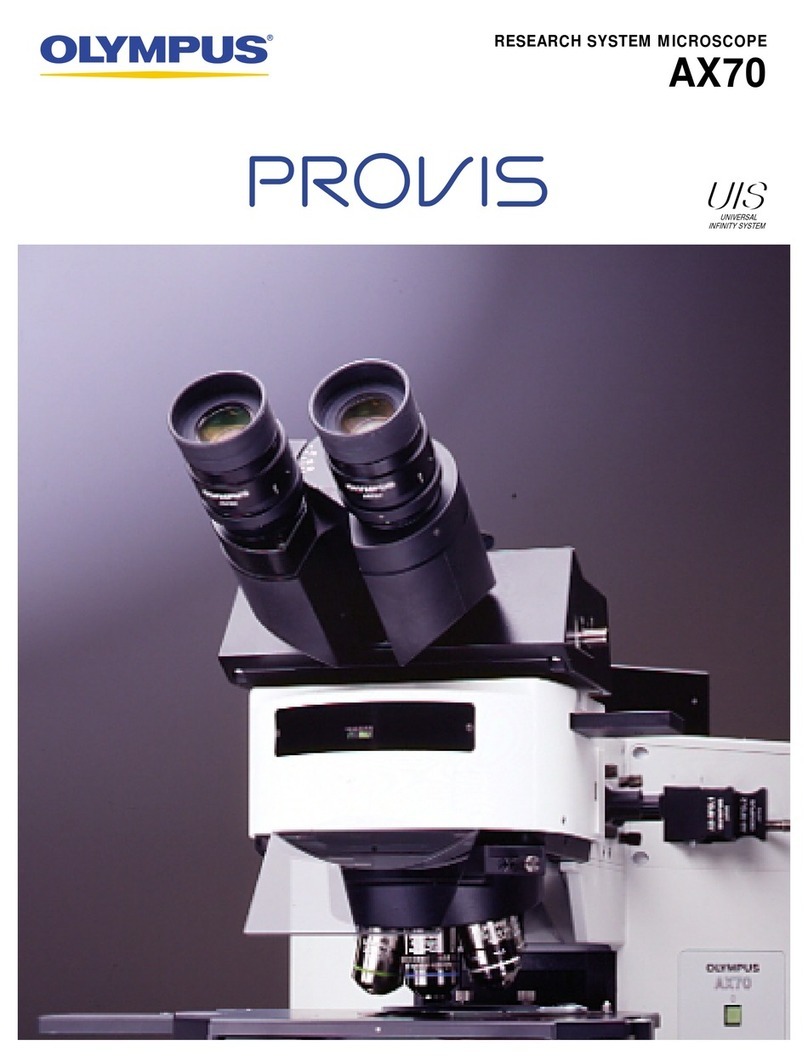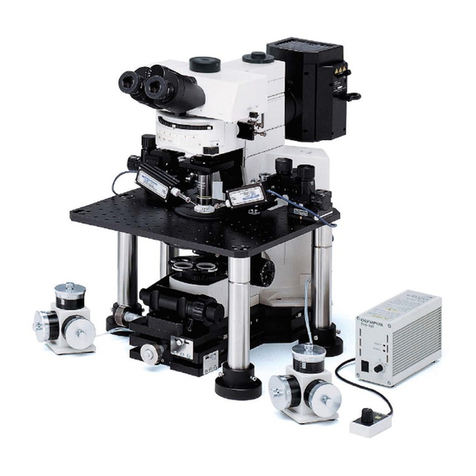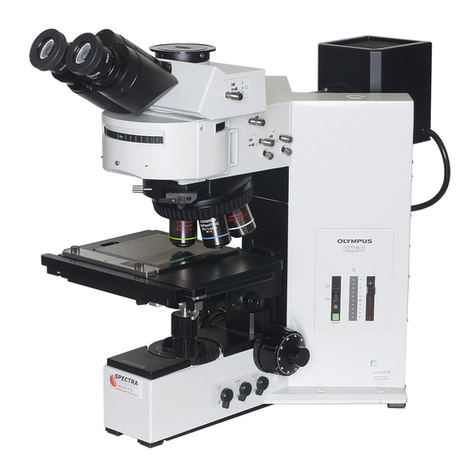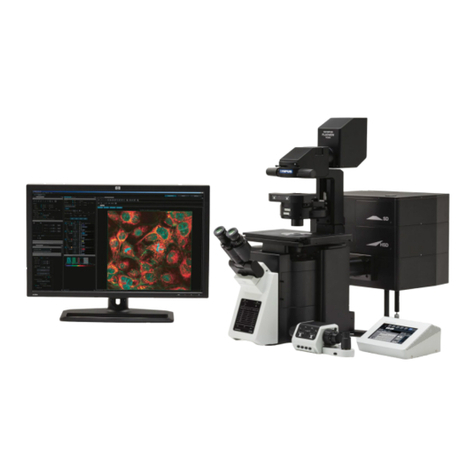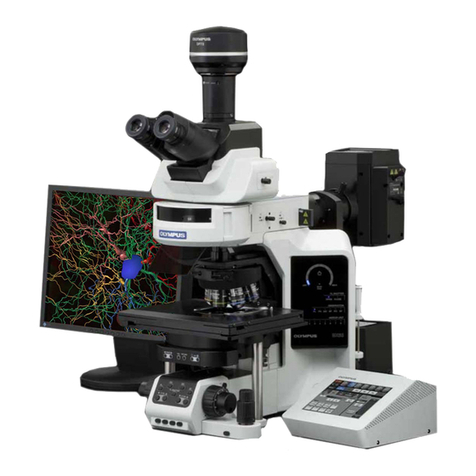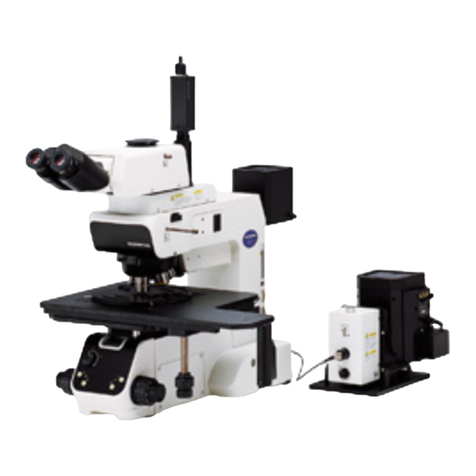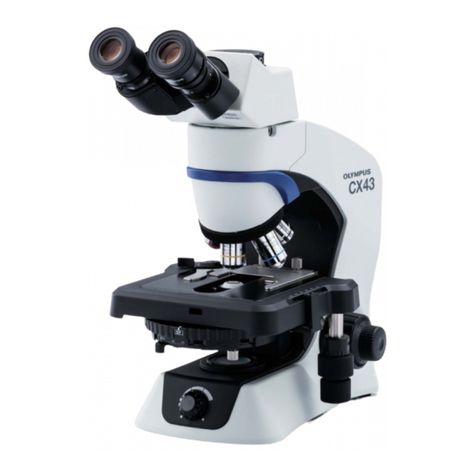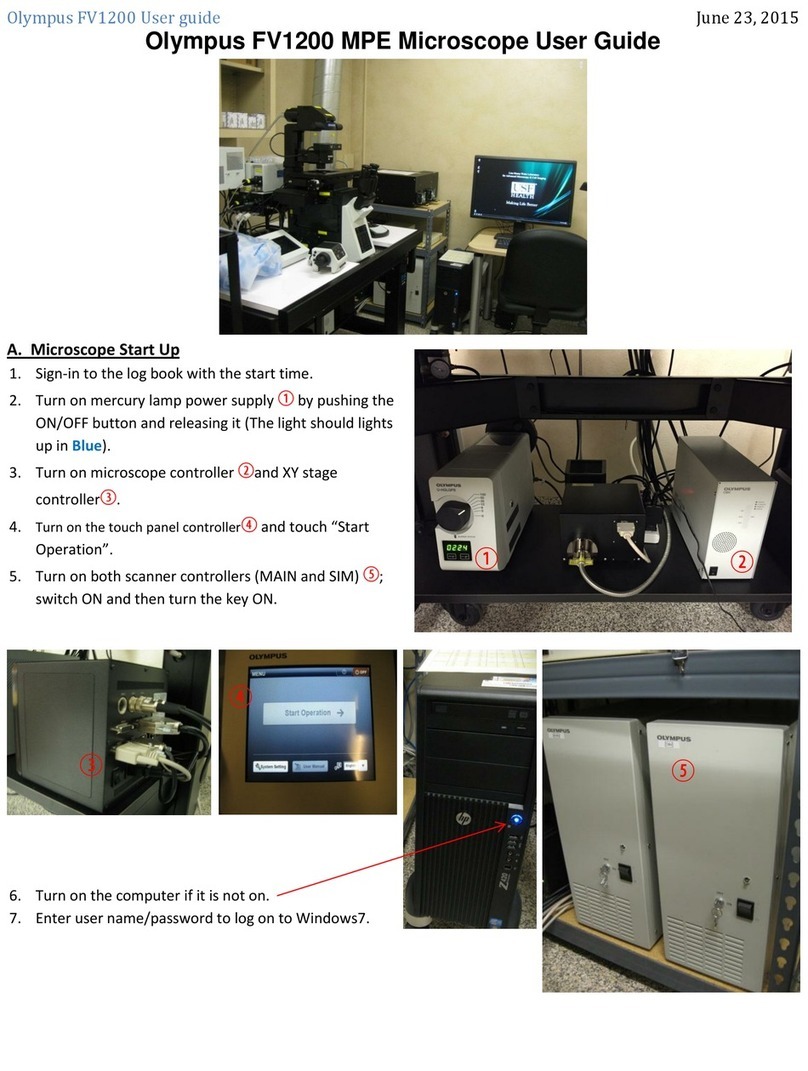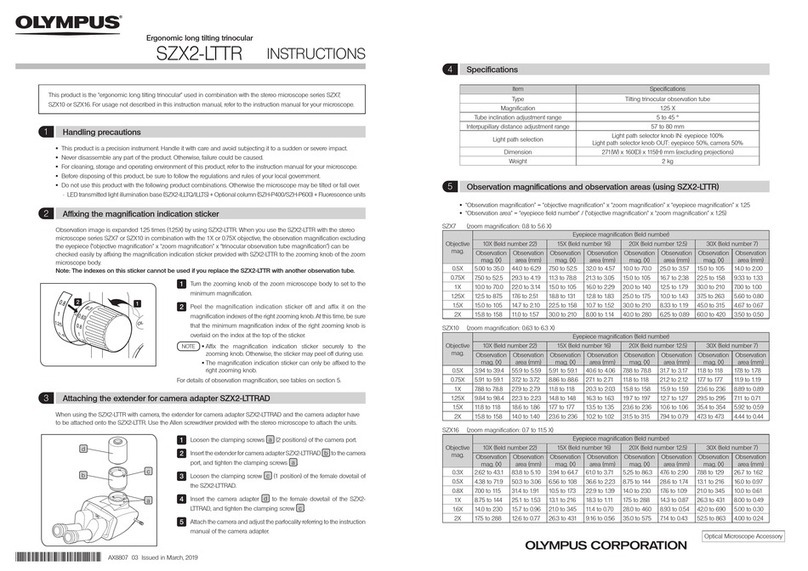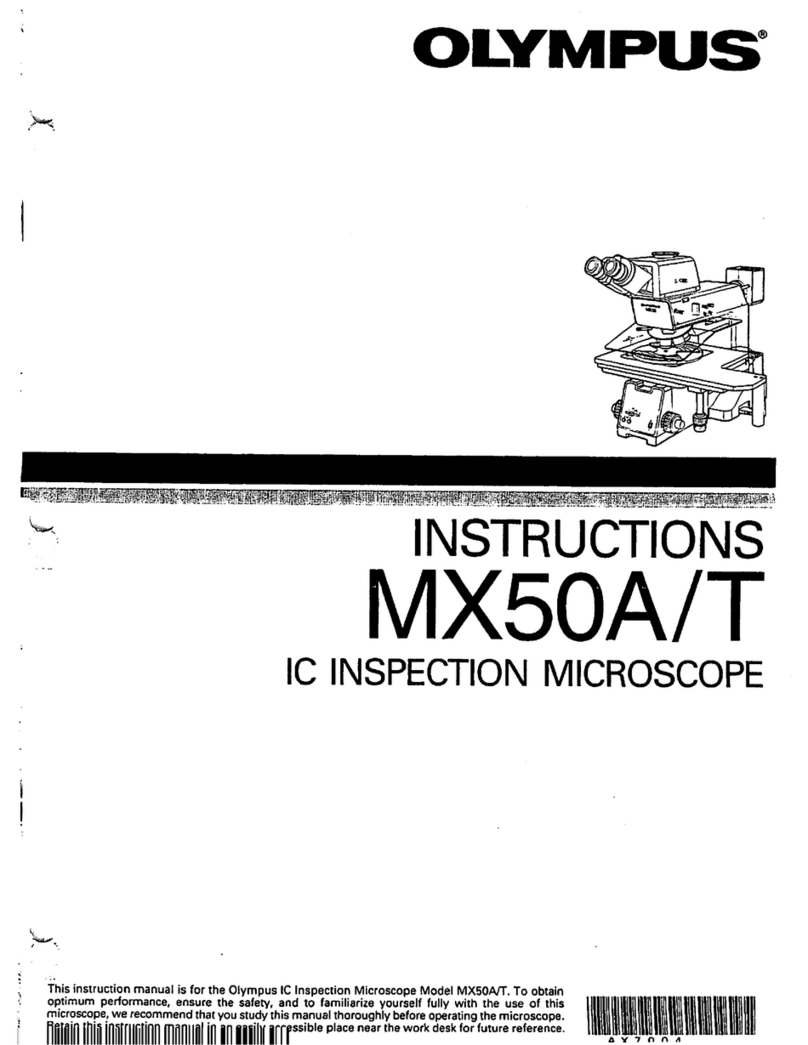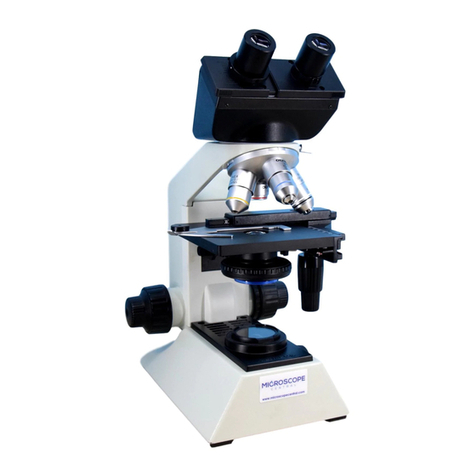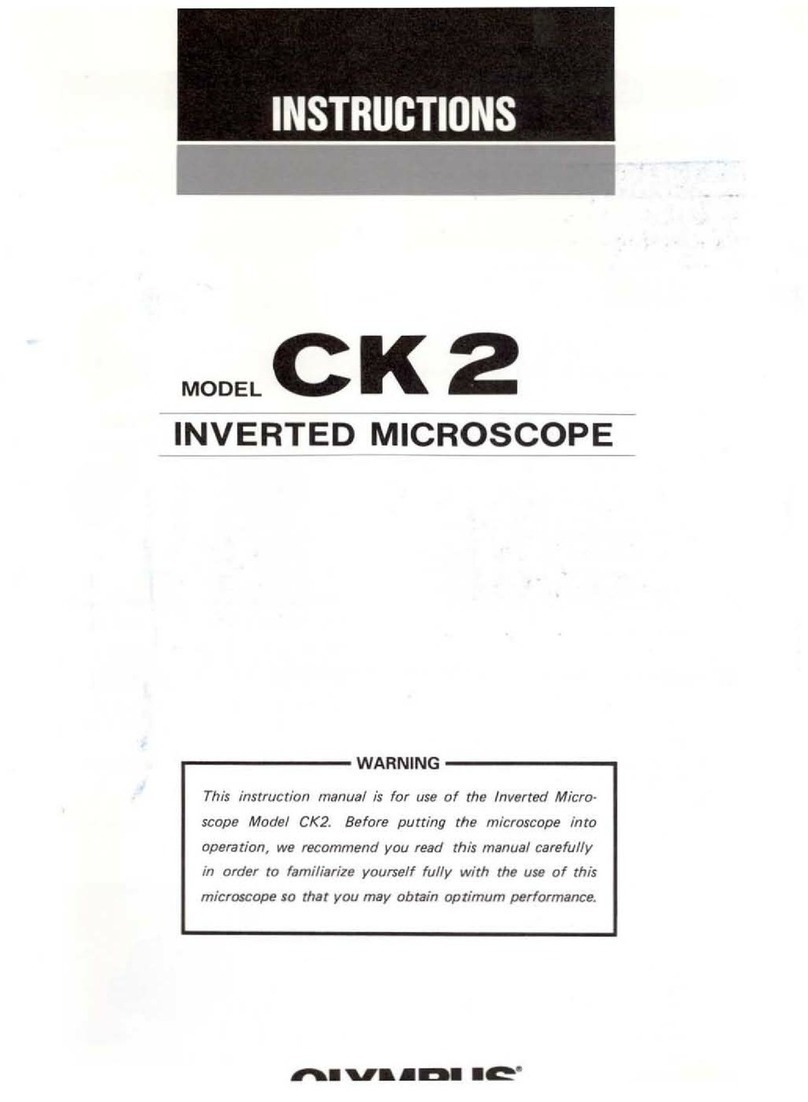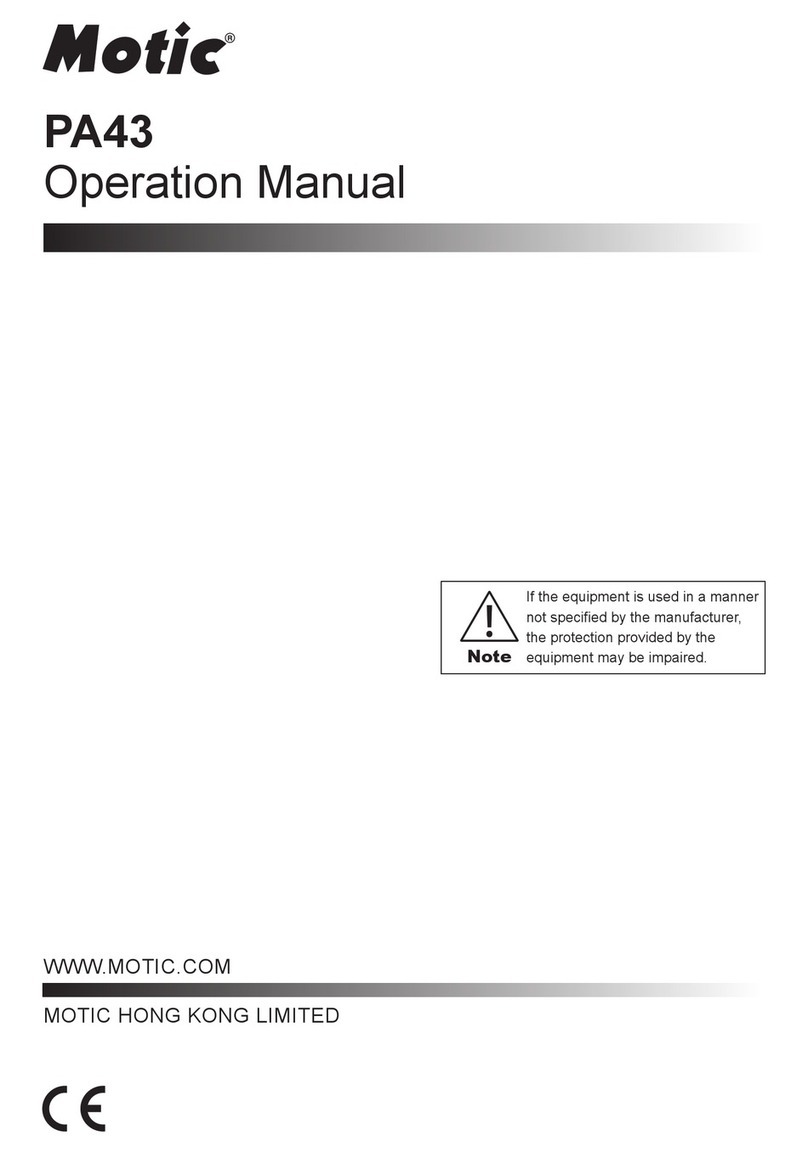
2
CAUTION - Carrying the microscope
CAUTION - Installation of the product -
Safety precautions
Hold the arm of the microscope.
When moving the microscope, hold the arm. (Approx. 15 kg)
Holding the stage, lamp housing or observation tube, etc., may
damage the microscope.
Remove the sample and the eyepiece.
When carrying the microscope, be sure to remove the sample and the
eyepieces to prevent them from dropping.
Also, remove units attached. If you carry the microscope attached with
units, the danger to drop the microscope will be increased due to the
heavier weight.
Do not slide on the top surface of the table.
Do not move the microscope by sliding on the top surface of the table.
The rubber legs may be damaged.
Install the microscope on a sturdy, level table or bench.
If you install the microscope on an unstable table or a tilted table, the microscope may drop and you may get injured.
Prevent the microscope from overturning.
The microscope becomes unstable if the height of the microscope is increased by the accessories mounted on it. In
this case, as this microscope may be overturned, take the actions to prevent the microscope from overturning.
In particular, if following units are combined, the microscope may be overturned even by the tilt of 10° or less.
· Height adapter (BX3M-ARMAD)
· Super widefield erect image tilting trinocular observation tube (U-SWETTR-5)
· Tilting trinocular tube (U-TTR-2)
· Intermediate attachment (U-DP, U-DP1XC, U-ECA, U-CA, U-EPA2, U-CPA, U-OPA, U-TRU, U-KPA)
For measures to prevent overturning, see "Attaching the overturning prevention plate" (page 94).
If the product is used in a manner not specified by this manual, the safety of the user may be imperiled. In addition, the
product may also be damaged. Always use the product according to this instruction manual.
The following symbols are used in this instruction manual.
CAUTION : Indicates a potentially hazardous situation which, if not avoided, may result in
minor or moderate injury.
: Indicates a potentially hazardous situation which, if not avoided, may result in
damage to the product or other property.
: Indicates the useful knowledge or information for use.



